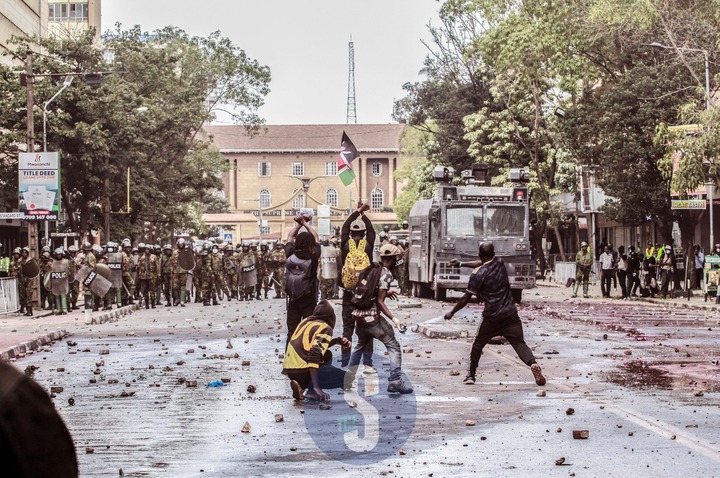For a generation that is hands-on with technology, nothing is impossible.
A generation armed with smartphones turned a hashtag into a national moment through coded calls, viral threads, digital posters, and real-time protest updates.
It all began with a whisper—a few posts, a handful of voices online. Then came the numbers.
By the morning of June 25, the whisper had become a roar, echoing through Nairobi’s streets and across Kenya.
The young generation, popularly referred to as Gen Z, has mastered the art and use of technology for revolution.
#SIRININUMBERS, a hashtag born in the digital trenches of Gen Z’s timeline on X, began as a call to rally Kenyans to come out and protest in honour of the victims of the anti-Finance Bill 2024.
The hashtag, which trended for days, transformed group chats into strategy rooms and memes into mobilisation tools.
As calls for protests intensified by Tuesday, every tweet and retweet echoed the growing unity on social media.
“Together we are one, tusichoke #SIRININUMBERS,” one social media user encouraged. Gen Zs went out of their way to fully participate in the online mission to rally others—who, in turn, did not disappoint.
By Wednesday, as early as 8am, the streets were already filling with people, with more streaming towards the main roads.
What began as small groups chanting anti-government slogans across the country soon became a full-blown crowd that could no longer be ignored.
With roads barricaded, many commuters were forced to complete the remainder of their journeys on foot.
“We have been told that the town is out of bounds for public vehicles, so we have to walk to work,” one commuter told the Star in Westlands.
Private cars were subjected to thorough security screening before being allowed into the CBD.
The security measures, which began early Wednesday according to police sources, were aimed at thwarting what authorities feared could turn chaotic—reminiscent of last year’s unrest, when thousands of youths stormed Parliament, catching security forces flat-footed.
Police were heavily deployed to keep protesters at bay. It, however, turned violent when demonstrators engaged in running battles.
Police used teargas and water cannons to disperse the protesters, some of whom retaliated by hurling the same teargas canisters and stones.
In Nairobi, protests gained momentum as demonstrators clashed with police.
The city was engulfed in white smoke as police hurled teargas at crowds charging toward them.
Demonstrators—mostly dressed in black—chanted slogans and held their ground, even as riot police closed in.
A tightly packed crowd formed at a key intersection near Parliament, resisting repeated attempts by officers to disperse them.
“They want us to fear, but we are not afraid,” shouted one protester, waving a placard as others banged on road signs and chanted “Reject Finance Bill!”
By 5pm, police and protesters were still engaged in running battles as a mammoth crowd attempted to push its way into the CBD.
A large group gathered along State House Road in Nairobi as the protests climaxed after a dramatic day of confrontation with security forces.
Thousands of protesters, who had earlier been blocked from accessing the road leading to State House, breached security and took over the area.
The demonstrators had initially assembled at Uhuru Park before pushing past barricades along State House Road in an attempt to reach the highly guarded presidential residence.
The protesters had vowed to reach State House as part of the 25 June commemoration of last year’s anti-government demonstrations.
A heavy contingent of anti-riot police had been deployed near State House—a restricted zone inaccessible without official clearance under the law.
This marked the first time protesters had successfully marched along State House Road.
In 2024, demonstrators breached Parliament grounds in similarly tense scenes.
